The week at a glance
- Slate-coloured Junco in Somerset
- American Black Tern in the Outer Hebrides
- Presumed Brown Shrike in the Outer Hebrides
- Steppe Grey Shrike still in Lincolnshire
- Barrow's Goldeneye returns to Co. Down
- Hooded Mergansers still in Fife and Dorset
- Possible Pacific Diver in Cornwall
Another lively November week passed by with a couple of new Nearctic megas taking top billing, as an old favourite made it back to Northern Ireland for another winter. Lincolnshire's star turn remained, performing like few rarities have ever performed before, and the guessing game as to the origins of a couple of sawbills goes on and on.

Slate-coloured Junco, East Coker, Somerset & Bristol (Photo: James Packer)

Brown Shrike, Vallay Strand, N.Uist, Outer Hebrides (Photo:
Paul Boyer)
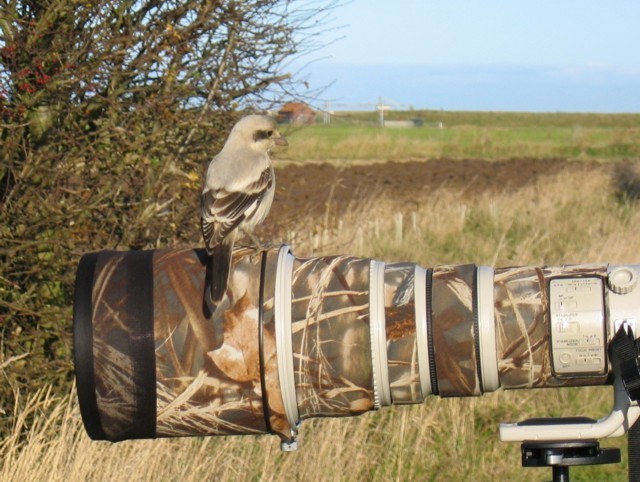
Steppe Grey Shrike, Grainthorpe Haven, Lincolnshire (Photo: Malcolm Hobbs)
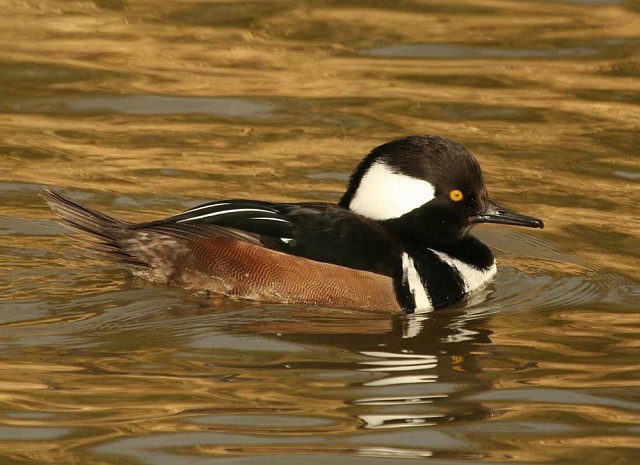
Hooded Merganser, Radipole Lake RSPB, Dorset (Photo: Martin Green)
A cracking adult male Slate-coloured Junco was found in a garden at East Coker near Yeovil (Somerset) on 16th and showed well, from time to time, until 18th. The second Junco of the year (following the obliging bird at Dungeness earlier this year), this was the second record for the southwestern county, following a male at Langton Budville in for a day in May 1983. The rarest new arrival of the week was the juvenile American Black Tern seen at North Bay, South Uist (Outer Hebrides) on 17th. This ultra-distinctive form of Black Tern is still incredibly rare here and this could prove to be the first accepted Scottish record (and only the second UK record). There have been five recent records in Ireland, including two last autumn, but it has been a long time since one has been seen in Britain, the only record being the bird seen in Somerset at Weston-super-Mare in 1999. Staying on the Outer Hebrides, Britain's seventh Brown Shrike was found at Vallay Strand, North Uist (Outer Hebrides) on 18th. Initially identified as a "Turkestan Shrike" (an Isabelline Shrike of the race phoenicuroides), the first photograph of the bird suggested that although bright and oddly advanced, the bird did indeed appear to be an Isabelline-type shrike. Examination of further images suggested that the short primary projection and a short p2 were significant indicators of Brown Shrike rather than the commoner species. The true colour of the bird, varying from shot to shot, saw some suggesting the bird was too warm in tone for Isabelline, with others suggesting it may not be too pale for Brown. The tail shape seemed more in keeping with Isabelline but again it was dependent on which photos were looked at. This one is set for much more debate, especially coming hot on the heels of the Brown = Red-backed Shrike on Scilly. A rather more straightforward very rare shrike is the first-winter Steppe Grey Shrike at Grainthorpe Haven (Lincolnshire) which stayed present and correct until 19th. It also remained ridiculously confiding, still merrily hopping around visiting birders' feet, heads, cameras and bags (wherever a mealworm could be placed) performing in a manner seldom seen from rare shrikes — or any other rarity come to that. It brings back memories of the Scilly Upland Sandpiper of 1983 and the Sunderland Baillon's Crake in 1989, to name a couple of the more famous up-close-and-personal megas over the decades. In County Down, the drake Barrow's Goldeneye made his return to Quoile Pondage on 15th, for his third winter at the site, having departed in late April. The popular first-winter, or female, Hooded Merganser was at Tayport (Fife) to 15th and the even more popular adult drake at Radipole Lake (Dorset) remained until 19th. In Cornwall, the probable adult Pacific Diver was seen off Marazion on 17th and 19th — presumably this is the returning (newly split) mega?

White-billed Diver, Bluemull Sound, Shetland (Photo: Brydon Thomason)
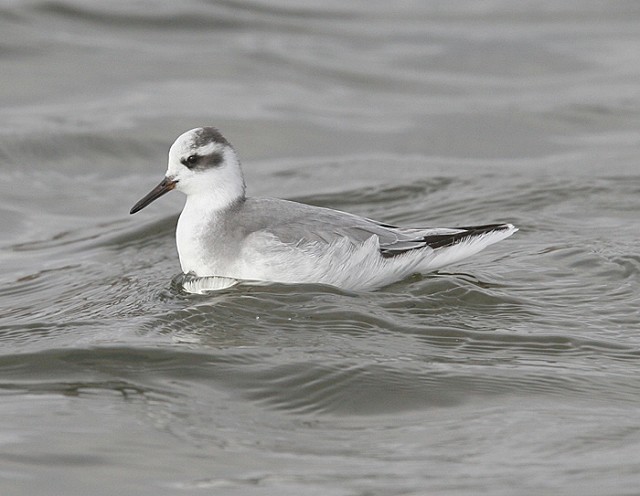
Grey Phalarope, Hampton, London, Greater (Photo: Andrew Moon)
Two White-billed Divers were seen on 16th: the adult was again off South Ronaldsay (Orkney) and another was again in Bluemill Sound (Shetland). Once again both Balearic and Sooty Shearwaters were in very short supply (one of the former, two of the latter) while some 20 Grey Phalaropes included 10 off Finvarra Point (Co. Clare) on 16th. Inland birds included one at Radwell (Bedfordshire) on 13th-16th and another at Hampton Court Park (London) on 13th-19th. A Sabine's Gull was reported off Sheringham (Norfolk) on 16th with a juvenile on Mutton Island, Galway (Co. Galway) on 19th, while 69 Little Auks in an hour off North Ronaldsay (Orkney) on 17th was the autumn's highest count so far, but the northerlies are coming…

Cattle Egret, Urswick, Cumbria (Photo: Neil Forbes)
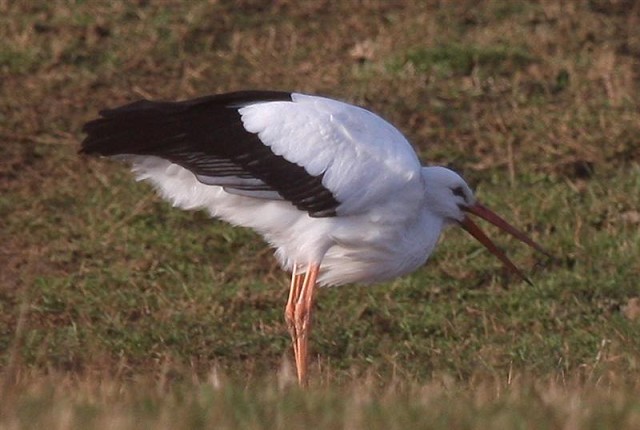
White Stork, Glascoe Dubh, Isle of Man (Photo: John Donnelly)
Five single Cattle Egrets were seen during the week: on 13th, one was seen flying over Sunk Island (East Yorkshire) and another appeared at Urswick (Cumbria), this bird remaining to 19th. In Cleveland, a Cattle Egret spent much of 15th at Saltholme Pools before heading off high northeast as the day drew to a close. In Ireland, one was seen at Brownswood (Co. Kilkenny) on 16th. On 18th, a Cattle Egret was near Harty Church, Isle of Sheppey (Kent) and two were at Shapwick Heath (Somerset). A Great White Egret was still being seen around the Titchwell/Thornham Harbour/Holme area (Norfolk) between 14th and 16th. Also on 14th, singles were seen at Paddock (Kent) and Rayne (Essex). The Great White Egret in Greater Manchester moved to Elton Reservoir on 15th before heading back to Astley Green later the same day, where it remained to 19th. The regular wintering bird at Blashford Lakes (Hampshire) was seen until 19th, while in County Galway, the Great White Egret was seen again on Lough Corrib on 17th. Fifteen Spoonbills were at Arne (Dorset) on 16th and six birds remained at Isley Marsh (Devon) to 17th. Two birds were at Anthony (Cornwall) on 15th when one was seen at Cliffe Pools (Kent). The single bird remained at the National Wetlands Centre (Carmarthenshire) to 16th. The Glossy Ibis in Lancashire was seen at Marshside from 14th-16th at least, while a White Stork was at Glascoe Dubh (Isle of Man) on 14th-19th (having first been seen on 11th). The Common Crane remained at Modbury (Devon) from 14th-19th, while two birds were seen in Kent on 17th, over Dungeness, then North Foreland and Shellness Point later in the day before appearing again at Scotney on 18th. In Norfolk, nine Cranes were seen at Stubb Mill on 15th and two birds flew over Norwich Airport on 18th. A Corncrake was seen at Bamburgh (Northumberland) on 13th.
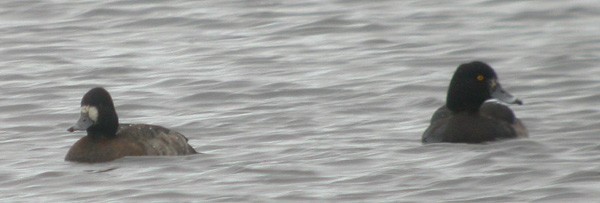
Lesser Scaup, Clea Lakes, Down (Photo: Derek Charles)
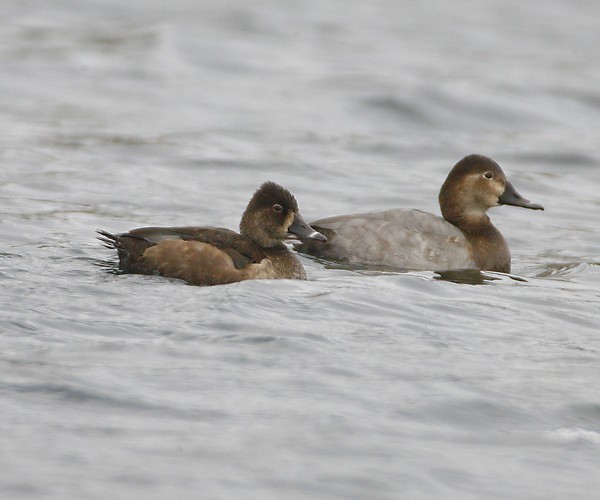
Ring-necked Duck, Whitlingham CP, Norfolk (Photo: anon)
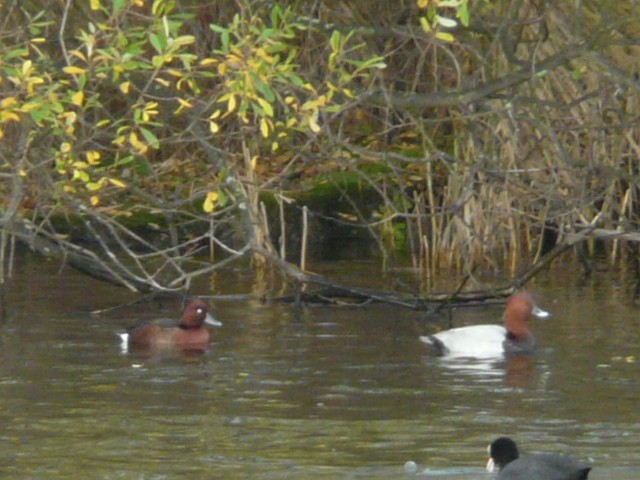
Ferruginous Duck, Cosmeston Lakes CP, Glamorgan (Photo: anon)

Green-winged Teal, Quoile Pondage, Down (Photo: Derek Charles)
A Red-breasted Goose was seen in the Pennington/Keyhaven Marshes area (Hampshire) from 15th to 19th with Canada Geese and Brent Geese. On Berneray (Outer Hebrides), a Richardson's Canada Goose was seen with Barnacle Geese on 18th and a Cackling Canada Goose was again at Caerlaverock (Dumfries & Galloway) on 19th. A Snow Goose was at Findhorn Bay (Moray) on 13th with one at the North Slob (Co. Wexford) the same day. The Snow Goose at Craobh Haven (Argyll) was seen again on 16th and 19th, while on 15th a Snow or Ross's Goose was seen flying over Besthorpe (Nottinghamshire) with 350 Pink-footed Geese — next stop Norfolk? Also in Norfolk, the hybrid Ross's Goose x Pink-footed Goose was seen around the Burnham Norton area for several days this week. At least eight Black Brants were recorded during the week: two birds were again on the Fleet (Dorset) on 13th, with singles at Pagham Harbour (West Sussex), Shoebury (Essex) and Titchwell (Norfolk) on 14th, at Gosport and Farlington Marshes (Hampshire) on 15th and 19th, and in Ireland on the North Slob on 13th-14th and at Raghly (Co. Sligo) on 16th.
Several Lesser Scaup were seen this week, including single adult drakes at Holme Pierrepoint (Nottinghamshire) and Hogganfield Loch (Clyde), the former to 16th, the latter to 18th, with the first-winter drake at Lydney (Gloucestershire) remaining to 17th and the female still at Helston Loe Pool (Cornwall) from 13th-17th. In Ireland, a drake Lesser Scaup was at Long Point, Loughrea (Co. Galway) on 16th while the adult female returned to Clea Lakes (Co. Down) on 15th-19th (the bird was last seen in late March this year). The female Ring-necked Duck remained at Whitlingham Lane, near Norwich (Norfolk) from 13th-19th and in Cumbria, the female Ring-necked Duck was again at Bassenthwaite Lake on 16th. A drake arrived at Loch Bhasapol, Tiree (Argyll) on 14th, and was still there the following day, and the returning drake was at Foxcote Reservoir (Buckinghamshire) to 17th at least and the wintering bird was still at Loch of Tingwall, Mainland (Shetland) on 18th. A first-winter drake Ring-necked Duck was at Scotney Gravel Pits (East Sussex) on 16th and an adult was seen in Ireland, at Lee Reservoirs (Co. Cork) on 16th. Three Ferruginous Ducks were seen this week: a first-winter drake was at Groby Pool (Leicestershire) on 14th and 17th, with further males at Cosmeston Lakes (Glamorgan) on 15th-19th and Amwell Gravel Pits (Hertfordshire) on 18th. A drake American Wigeon returned to Wick (Highland) on 14th (last seen on the river here on 5th March this year) and another drake was seen on Loch Bee, South Uist (Outer Hebrides) on 14th, along with a drake Green-winged Teal. Further Green-winged Teal were seen at Capringstone Flash (Ayrshire) on 16th and Caerlaverock on 19th, while in Ireland, at least five birds were recorded. In Cork, singles were at Inchydoney Bay on 14th-16th and at Shanagarry on 16th; one was still at Belfast Lough (Co. Antrim) from 14th-17th, another was at Kilcoole (Co. Wicklow) on 16th, and a final bird was seen at Quoile Pondage (Co. Down) on 15th. A drake Blue-winged Teal was a good find at Saltholme Pools (Cleveland) on 14th, the bird remaining to the following day. This is the first Blue-winged Teal in England for over a year, the last being a much-discussed eclipse drake that spent a month in Cleveland from late August to late September last year. Another drake Blue-winged Teal was seen briefly at Drakelow Wildfowl Reserve (Derbyshire) on 14th. The second-winter drake King Eider remained around the Taw/Torridge Estuary (Devon), mainly off Appledore, from 13th-17th but there was no sign of the first-winter drake off the Cleveland coast on 13th. An adult drake Surf Scoter was a great find off Starr Gate, Blackpool (Lancashire) on 16th (and seen again on 18th) while rather more expected was the drake still in Largo Bay (Fife) on 13th. An adult female Surf Scoter was again seen at Dawlish Warren on 14th-19th and the two first-winter birds remained at Doonbeg (Co. Clare) to 17th at least.

Rough-legged Buzzard, Reed, Hertfordshire (Photo: Mike Lawrence)
On Scilly, the juvenile male Snowy Owl was still present on St. Mary's on 13th (and a female was on Alderney on 16th, having first been seen there on 10th). A second-winter male Rough-legged Buzzard was a terrific find at Reed (Hertfordshire) on 15th and the popular bird (the first in the county for over three decades) was still present to 19th. Further individuals were seen at Aston-on-Trent (Derbyshire) on 16th, with another on Lundy (Devon) until 18th at least, that bird having first appeared the previous week. In Lincolnshire, a Rough-legged Buzzard was reported again at Farforth on 18th — there has been a lookalike Common Buzzard present in the area since at least 8th November; the Rough-legged Buzzard was photographed and is reported to have a rather brown Common Buzzard-like tail. Also on 18th, a Rough-legged Buzzard was at Leighton Moss (Lancashire). Back in Lincolnshire, another Rough-legged Buzzard was seen at Trusthorpe on 19th, while two birds were seen at Pocklington (East Yorkshire) from 15th. In Suffolk, late Ospreys remained at Stoke-by-Nayland (Suffolk) to 17th and at Pipps Ford on 19th.

American Golden Plover, Omey Strand, Galway (Photo: Dermot Breen)
Juvenile American Golden Plovers were still at East Harling (Norfolk) and Omey Island (Co. Galway) on 13th, while in Cambridgeshire, the roaming juvenile was seen at Needingworth Quarry Lakes on 14th-16th. Also on 14th, the juvenile American Golden Plover reappeared at Port Meadow (Oxfordshire) — having been last seen in mid-October — and a juvenile was found at Doonbeg (Co. Clare). Further new birds were discovered at Hamford Water (Essex) on 16th and Cockersands (Lancashire) on 19th. The first-winter Lesser Yellowlegs was still at Clonakilty (Co. Cork) from 14th-16th and the Long-billed Dowitcher remained at Dundalk Docks (Co. Louth), also from 14th-16th. Another Long-billed Dowitcher was at Loch Bee, South Uist (Outer Hebrides) on 16th and 18th, while a Pectoral Sandpiper appeared at Lough Brickland Lake (Co. Down) on 18th. A Dotterel was reported flying over Margate (Kent) on 17th.

Iceland Gull, Killybegs, Donegal (Photo: Derek Charles)

Kumlien's Gull, Skateraw, Lothian (Photo: Peter M. Macdonald)

Glaucous Gull, Donna Nook, Lincolnshire (Photo: Gary Thoburn)
Caspian Gulls nudged into double figures this week, with a third-winter at Potteric Carr (South Yorkshire) proving popular from 13th-19th (having appeared a week or so before). Two adults were seen at Ditchford Gravel Pits (Northamptonshire) on 13th, and two different birds were seen in Worcestershire this week. Around 28 Iceland Gulls were seen, spread from Shetland to Somerset, and included two at Liscannor (Co. Clare) on 15th, three at Killybegs (Co. Donegal) on 16th and a "dark" juvenile noted at Eyebrook Reservoir (Leicestershire) on the same date. A second-winter Kumlien's Gull was again at Loch Ryan (Dumfries & Galloway) on 19th. Over 20 Glaucous Gulls were seen, with three on Unst (Shetland) on 15th, two at Killybegs on 16th and the second-winter that remained at Donna Nook (Lincolnshire) from 13th-19th. The second-winter Ring-billed Gull was still being seen at Lamby Lake (Glamorgan) to 19th and in Lancashire, the adult was seen again at Prescot Reservoirs on 14th. The inland adult Ring-billed Gull was seen again at Carsington Water (Derbyshire) on 15th-16th and the first-winter seen last week at Wadebridge (Cornwall) was noted again on 15th. Also on 15th, another first-winter was at Lurgan Green (Co. Louth), while further Irish birds were seen at Nimmo's Pier (Co. Galway) and Timoleague (Co. Cork) on 14th while the adult at Gosport (Hampshire) was present from 13th-19th and the regular wintering bird was at Westcliff-on-Sea (Essex) on 19th.
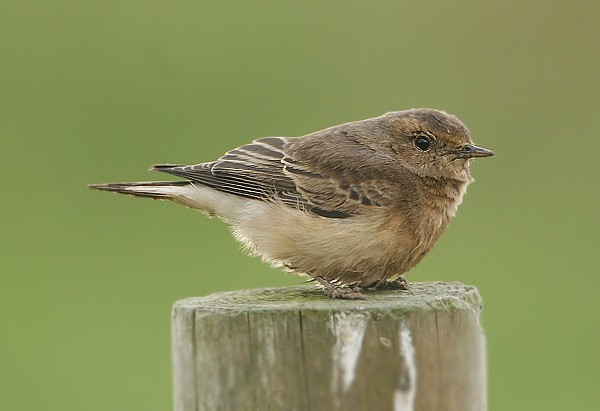
Pied Wheatear, Bempton Cliffs RSPB, East Yorkshire (Photo: Gary Thoburn)

Desert Wheatear, Saltfleet, Lincolnshire (Photo: Marcus Conway)
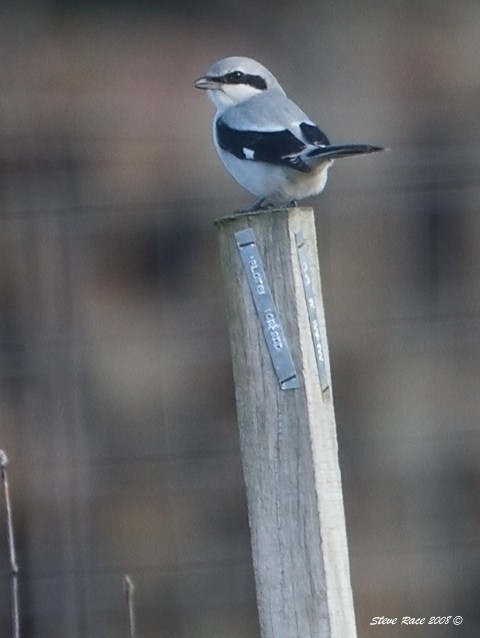
Great Grey Shrike, Wykeham Forest, North Yorkshire (Photo: Steve Race)
In North Yorkshire, the first-winter female Pied Wheatear stayed at Reighton Sands until 15th before relocating to Bempton Cliffs (East Yorkshire) on 16th and 18th. The female Desert Wheatear at Saltfleet (Lincolnshire) was still present from 13th-14th and a first-winter male was a new arrival around Donmouth and Murcar Golf Course (Aberdeenshire) on 15th. In Northumberland, on Holy Island, the Red-flanked Bluetail was still in place on 13th-14th. A Richard's Pipit was seen at Porthgwarra (Cornwall) on 16th while the Black-bellied Dipper was reported again at Glandford (Norfolk) on 15th. At least 10 Great Grey Shrikes were seen this week: on 13th one was at Smallacombe Downs (Cornwall) while on 15th, singles were noted at Wykeham Forest (North Yorkshire), Bellever Tor (Devon), Wishmoor Bottom (Berkshire) and in the New Forest (Hampshire). On 16th, a Great Grey Shrike was at Arne (Dorset) with further singles on 17th at Lakenheath Fen (Suffolk) and Ramsley Reservoir (Derbyshire) and on 18th, Great Grey Shrikes were seen at Park Hall Country Park (Staffordshire) and Eleveden (Suffolk), with presumably this bird moving to nearby Grimes Graves (Norfolk) the following day.
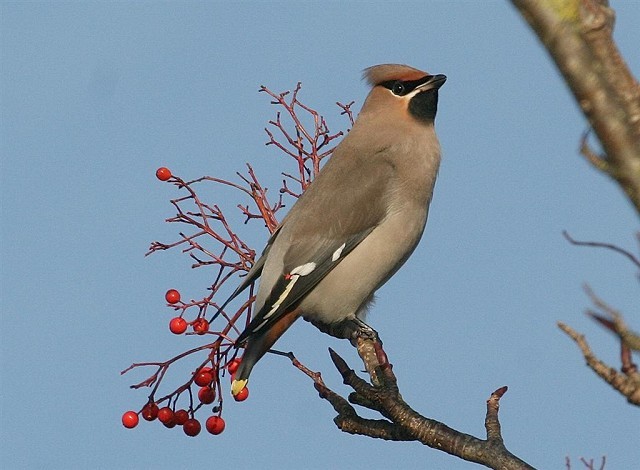
Waxwing, Barrow, Lancashire (Photo: Michael Foley)
Scotland continued to dominate in terms of large gatherings of Waxwings this week. At least 200 were seen around Inverness (Highland) on 13th, with, on the same day, 200 in Dundee (Angus), 100 more nearby at Broughty Ferry (Angus) and 240 at Govanhill, Glasgow (Clyde). On 14th, 114 were in Ayr (Ayrshire), 120 were seen in Aberdeen, 200 were in Montrose (Angus) and the Govanhill flock rose to 350+. Birds were reported across the country on 15th and new three-figure flocks were in Elgin (Moray) — 170 birds here — and Invergowrie (Perth & Kinross) where 200+ were counted. On 16th, 200 Waxwings were at Saltcoats (Ayrshire) and a similar number were at Lochgilphead (Argyll). At least 200 birds were still being seen around Glasgow on 17th, and up to 220 birds were around Edinburgh on the same day. A further 100 were seen at Whiting Bay, Arran, also on 17th, and 150+ were in Aberdeen on 18th. Hundreds more made it further south and west; dozens and dozens of groups were reported around the country, with 120 at Hemlington (Cleveland) on 17th the first group outside Scotland to break the century mark this autumn. At least 80 birds were seen in Jarrow (Co. Durham) on 14th-15th and 85 were at Timble Ings (North Yorkshire) on 16th; by 19th, the flock in Jarrow had risen to at least 185 birds, with 190+ in Middlesbrough (Cleveland) on the same day. A few birds made it to the centre of the country (records from Nottinghamshire, Derbyshire, Leicestershire, Oxfordshire and Bedfordshire) and a lone Waxwing made it to Portishead (Somerset) on 14th. In Ireland, 15 Waxwings were at Dundalk (Co. Louth) on 13th, seven were in Dublin (Co. Dublin) on 14th and a dozen were seen at Glenties (Co. Donegal) on 17th, with a singleton at Lough Beg (Co. Derry) on the same date. Wales scored with six at Towyn (Conwy) on 19th.

Sardinian Warbler, Berry Head, Devon (Photo: Charlie Fleming)

Hume's Leaf Warbler, St. Mary's Island, Northumberland (Photo: anon)
The female Sardinian Warbler at Berry Head (Devon) reappeared on 15th (having last been noted on 12th) and remained to 19th, when Barred Warbler and Yellow-browed Warbler were also on offer at the same site! The Hume's Leaf Warbler was still at St. Mary's Island (Northumberland) from 13th-15th, and the latter date also saw another bird found at Loch of Strathbeg (Aberdeenshire). Some 20 more Yellow-browed Warblers were noted this week, including at least four around Weymouth and Portland (Dorset), three in Cornwall, two each in Norfolk and Suffolk and singles on the Isle of Wight and in Carmarthenshire on 16th.
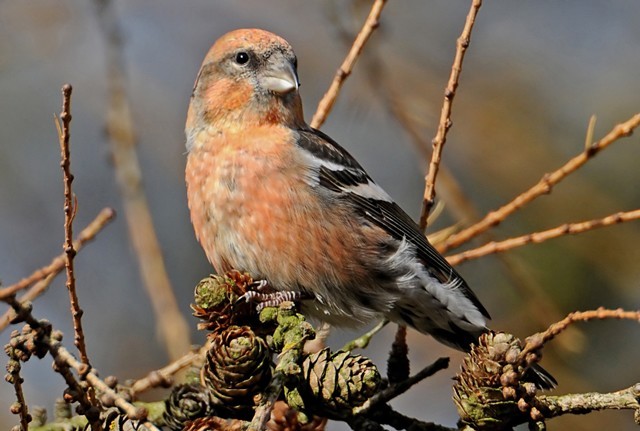
Two-barred Crossbill, Bilsdale, North Yorkshire (Photo: Kev Joynes)
The handsome male Two-barred Crossbill was still coming to garden feeders near Bilsdale (North Yorkshire) from 13th-19th. At Rainham Marshes (London), Serins continued to be seen on a daily basis this week, with a remarkable seven birds reported on 13th, four of which remained to 16th and one was still around on 18th. A Little Bunting was flushed at Blackhall Rocks (Co. Durham) on 19th. Finally, the juvenile Rose-coloured Starling was still in Newquay (Cornwall) on 13th-15th.
Photo of the Week

Steppe Grey Shrike, Grainthorpe Haven, Lincolnshire (Photo: Malcolm Hobbs)
Whether due to exhaustion, disorientation or just plain tameness, rarities are often very approachable. Some confiding individuals provide photographers with the opportunity to capture a wide range of images, including head shots and ID feature close-ups, action and behavioural shots, plus environmental and creative portraits. The first-winter Steppe Grey Shrike that has spent the last couple of weeks at Grainthorpe Haven in Lincolnshire is a good example of an individual that's obviously comfortable with its massed admirers. If proof of this were required, the series of snapshots uploaded by Malcolm Hobbs would be pretty convincing. Shots of the bird landing on cameras and scopes are one thing, but landing on a birder's head is another! Image quality is important for many types of photography but, as with snapshots of family and friends, sometimes it's all about capturing a moment and telling a story.
Other notable photos

Starling, Leighton Moss RSPB, Lancashire (Photo: Pauline Greenhalgh)

Cormorant, Loch Tay, Perth & Kinross (Photo: Ronnie Lane)

Whooper Swan, Martin Mere WWT, Lancashire (Photo: David Cookson)
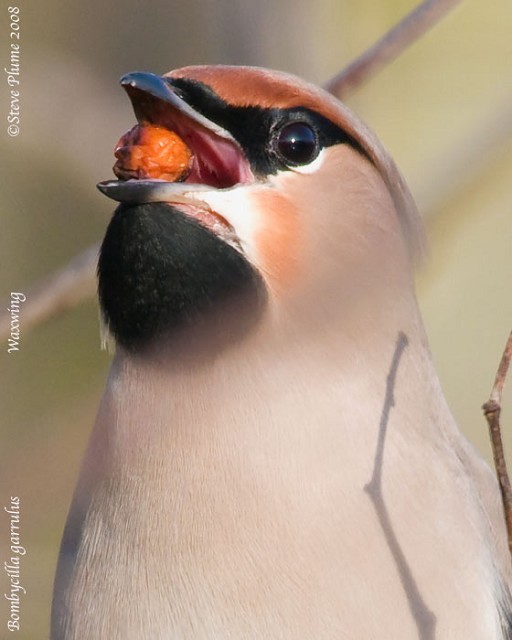
Waxwing, Rendlesham, Suffolk (Photo: Steve)

Kentish Plover, Spain (Photo: Steve Fletcher)

Peregrine Falcon, Summer Leys LNR, Northamptonshire (Photo: Douglas Mcfarlane)

Goldfinch, Portscatho, Cornwall (Photo: Steve Rogers)

Grey Plover, Killard NR, Down (Photo: Craig Nash)
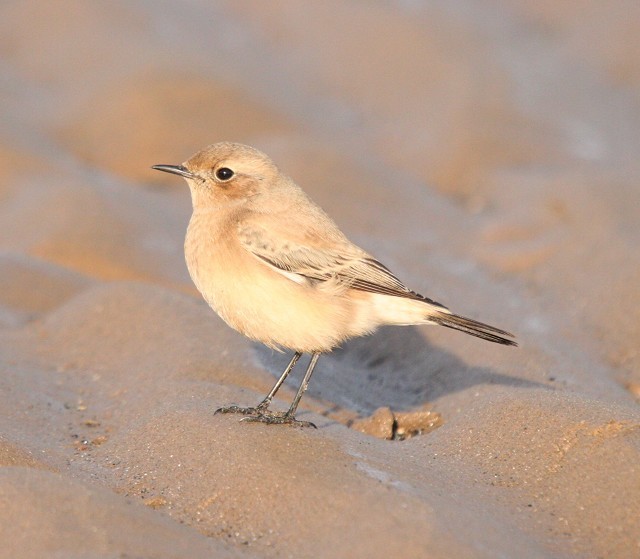
Desert Wheatear, Saltfleet, Lincolnshire (Photo: Paul_leafe)

Marsh Tit, Rufford CP, Nottinghamshire (Photo: Matt Latham)

Knot, New Brighton, Cheshire (Photo: Richard Steel)

Great Black-backed Gull, Budleigh Salterton, Devon (Photo: Barry Boswell)

Wigeon, Cley Marshes NWT, Norfolk (Photo: Richard Bedford)
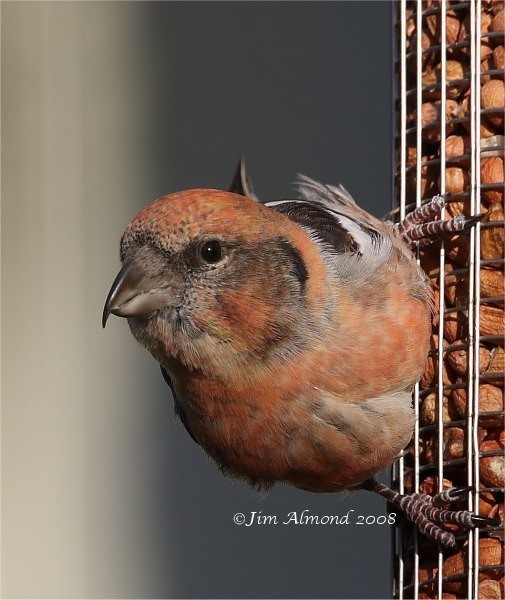
Two-barred Crossbill, Bilsdale, North Yorkshire (Photo: Jim Almond)

